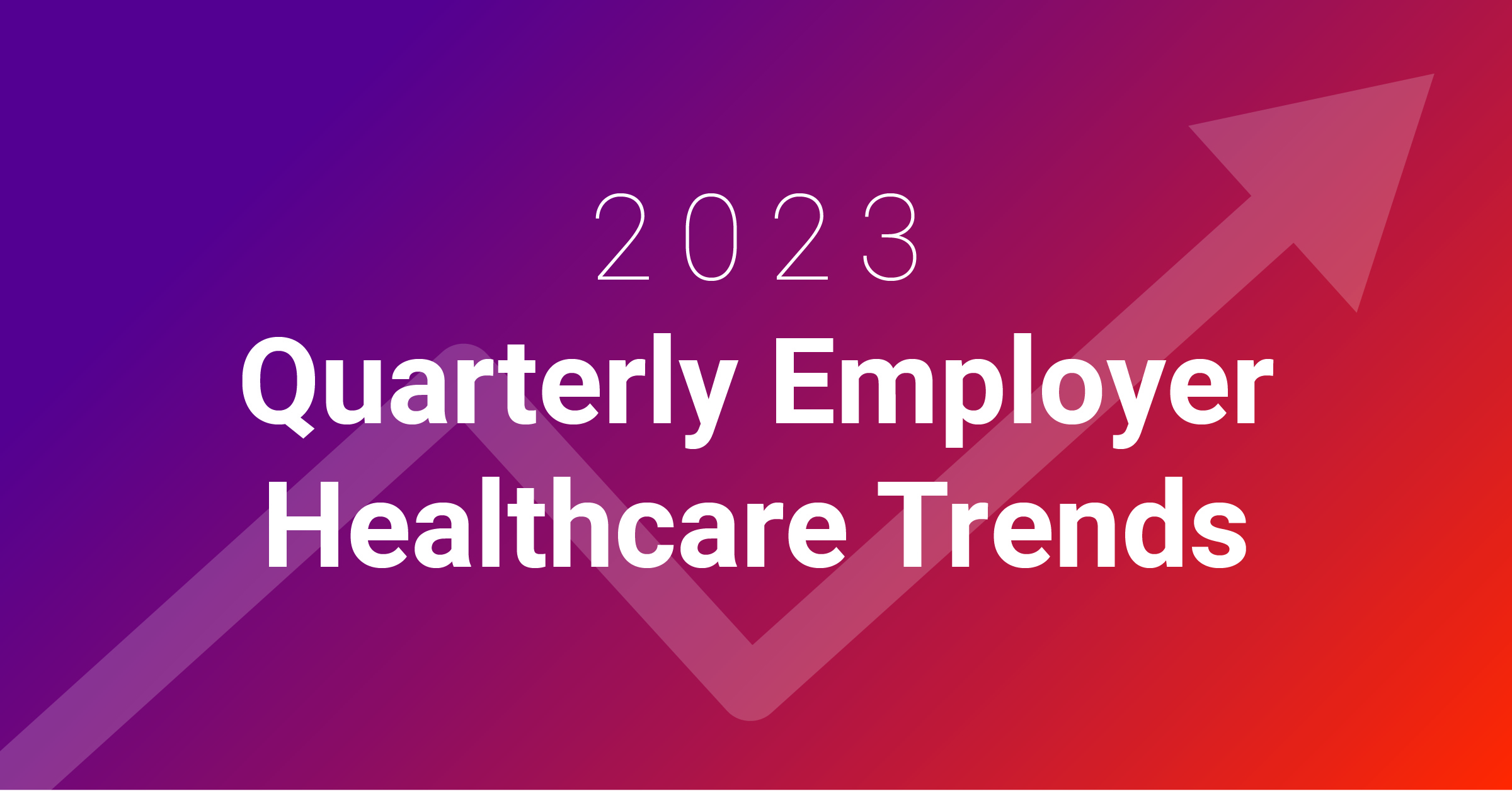Employers want their people to feel better and continue to take steps to improve their health. That’s the biggest takeaway, as we see the first quarter’s workforce healthcare trends centering around employee wellness in 2023.
For instance, advanced primary care solutions continue to gain traction as employers see success with value-based care models, employee health and wellness initiatives remain a key part of HR leaders’ overall strategies, and physical therapy is quickly becoming a key service in an integrated primary care model.
“With society, family issues, financial issues, layoffs — a lot of things are happening,” says Larry Boress, Executive Director of the National Association of Worksite Health Centers. “Employers have recognized if you don’t address the social determinants of health, you won’t be able to have a healthy and productive employee.”
Value-Based Care Remains at the Forefront for Employers
A Commonwealth Fund study shows that despite the U.S. spending two to four times more on healthcare than most other high-income countries, it experiences the worst health outcomes overall of any high-income nation.
“We currently live in a reactive sick care system that’s unconnected,” says Eric Neuville, Marathon Health’s VP of Market Development. “It’s a relative value unit system, so the more medical professionals do, the more money they make.”
Because of the fee-for-service model, primary care physicians see up to 10 patients an hour, often referring them to expensive specialists because they don’t have the time to address the patients’ needs.
To combat this, employers continue to seek out value-based advanced primary care models to improve outcomes and experiences for their employee populations while lowering costs. Under these agreements, instead of being compensated for the amount of healthcare services delivered, providers are rewarded for helping patients improve their health.
“Marathon Health sees, on average, two members every hour,” Neuville says. “Then, you can really treat patients. That’s the beauty of the model. And there are a ton of claims savings, because our providers practice to the top of their license versus shuttling patients off to a specialist. We refer at the right time, not the convenient time.”
Members benefit from a personalized approach, and employers — who can adopt Network or virtual healthcare services in as little as 12 weeks — experience a happier, healthier employee population.
“If you improve the wellbeing of your employees, they’re more productive at work,” Neuville says. “With improved outcomes, you save on overall costs. As an employer, you can use this as a retention and recruitment tool. Anyone can provide a free gym membership, and that’s cool. But free healthcare, including behavioral health and patient navigation, that’s life-changing.”
Physical Therapy Becoming Key Service in Integrated Primary Care Model for Employees
To focus on whole health, employers are integrating physical therapy health services into existing primary care programming. Last year, Marathon Health saw a year-over-year 28.5% increase in physical therapy visit volume, in addition to an increase in clients requesting to add physical therapy services to their wellness offerings.
Scope of physical therapy services
- Orthopedic injury treatment
- Ergonomic assessments
- Preventive exercise prescription
- Examination and evaluation of impairments/activity limitations
- Treatment for medical conditions such as carpal tunnel, back pain and shoulder pain
With physical therapy occupying 18% of all primary care appointments in the U.S., and one in two adults developing a musculoskeletal condition in their lifetime, Marathon Health Director of Physical Therapy Jon Strychasz stresses the importance of integrating physical therapy into the primary care model.
“You go to Morton’s, and everybody gets a steak. It’s the biggest part of the meal,” he says. “But to really make an enjoyable meal, you need good side dishes. Behavioral health, health coaching and physical therapy help create that whole patient care approach.”
When patients see a physical therapist in the community, the doctor typically only addresses the knee or back pain sitting in front of them. But in an integrated approach, the physical therapist and primary care physician work together.
Take Healthy Like Me winner Ann Babinyecz as an example. When seeing Strychasz for post-op therapy, she says he referred her to the primary care physician due to unmanaged diabetes. Together, her Marathon Health team taught her a gym routine, healthy eating habits, and other tips for managing her diabetes.
“I lost 40 pounds and lowered my A1c,” Babinyecz says. “I have never felt better. I work out at the gym three to four days a week and walk every day. I even participated in the health center’s exercise challenge — and won!”
Long-term HR Strategies Focus on Employee Wellness and Health
COVID-19, The Great Resignation and quiet quitting all contributed to employers’ increased focus on offering wellness resources as a recruitment and retention strategy. In fact, Business Group on Health 2023 statistics show 65% of employers see health and wellbeing playing an integral role in their workforce strategy, up from 27% just 5 years ago.
And while gym memberships and healthy snacks used to be enough, employers recognize supporting employees holistically makes a bigger impact. A recent Workhuman and Gallup report found employee wellness correlated with reduced levels of burnout, better social wellbeing, higher levels of belonging and an increased feeling of thriving.
As such, employers will implement more services and programming around social, financial and behavioral health, in addition to adopting more accessible healthcare models for their employees. In line with this trend, Marathon Health is seeing an uptick in clients adding services, in addition to increasing access by adopting virtual care or joining Network health centers, in metro areas located around town where employees live, work and shop.
“As we achieve consistent outcomes for our clients in terms of the return on their investment, we have the opportunity to expand our services and increase the number of lives we are serving on behalf of our clients,” says Katie Vicars, Senior VP of Client Development for Marathon Health. “In 2022, we were able to expand services with 58 of our current clients. Many of those expansions include serving net new lives and the introduction of behavioral health and physical therapy.”
CHG Healthcare added behavioral health services in 2017 and has recently expanded the offering to include pediatric behavioral health services. “Behavioral health is and will continue to be our top priority because there is such a need,” says Carrie Koncar, CHG Senior Wellness Specialist. “We rely heavily on our partnership with Marathon to help us take care of the mental well-being of our people and their families.”
You might also like
Subscribe to our newsletter and stay on the cutting edge of worksite healthcare.










